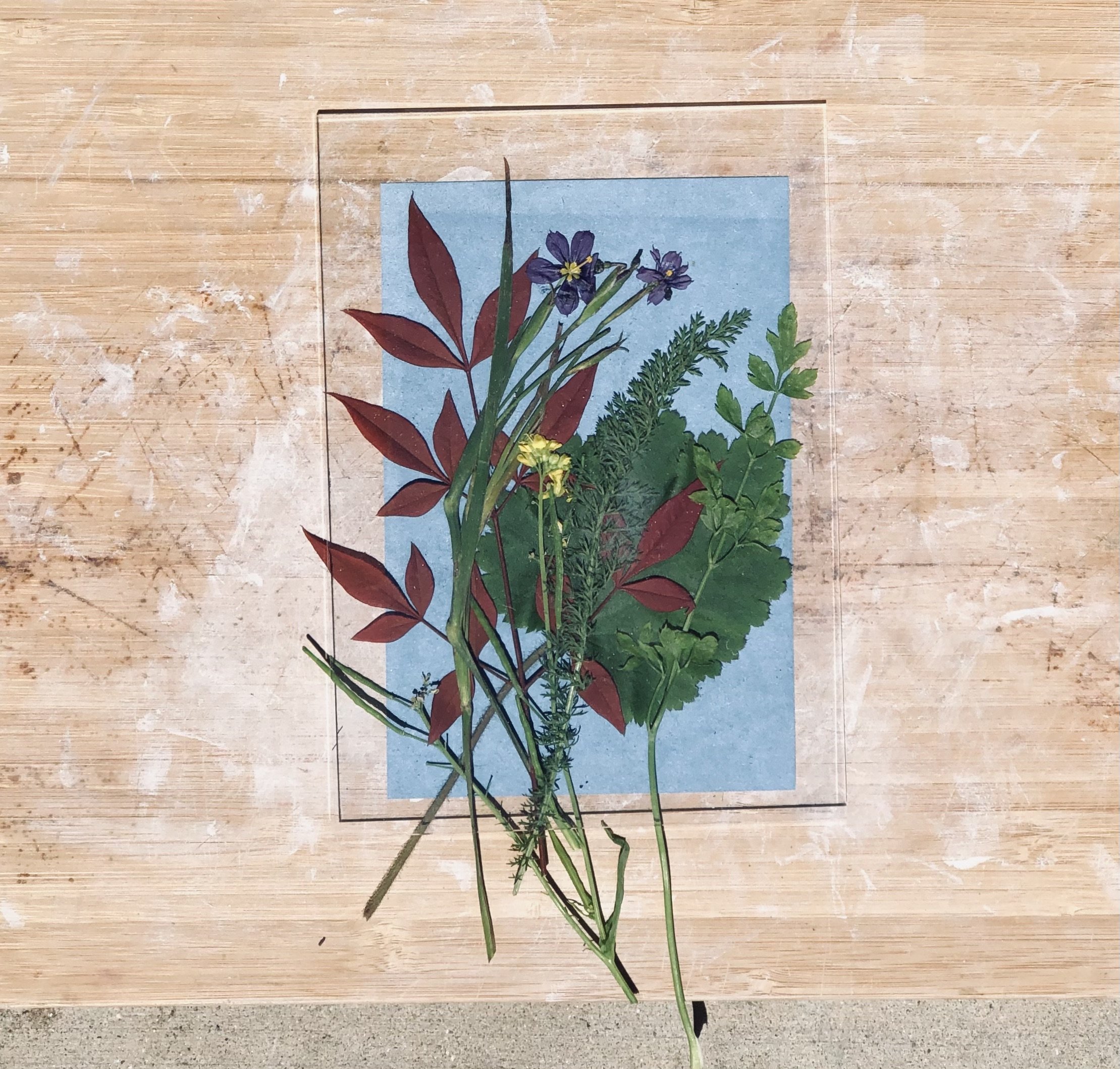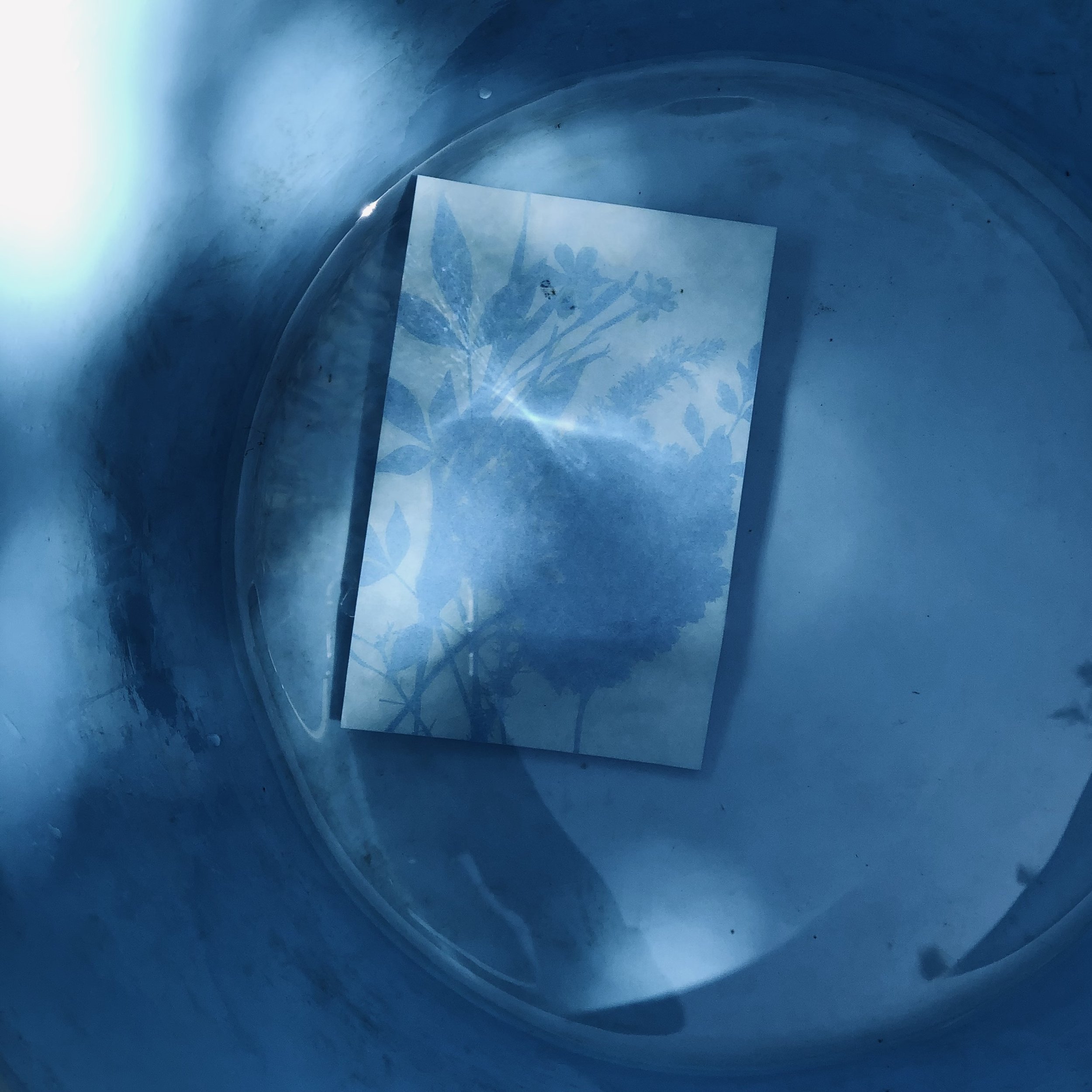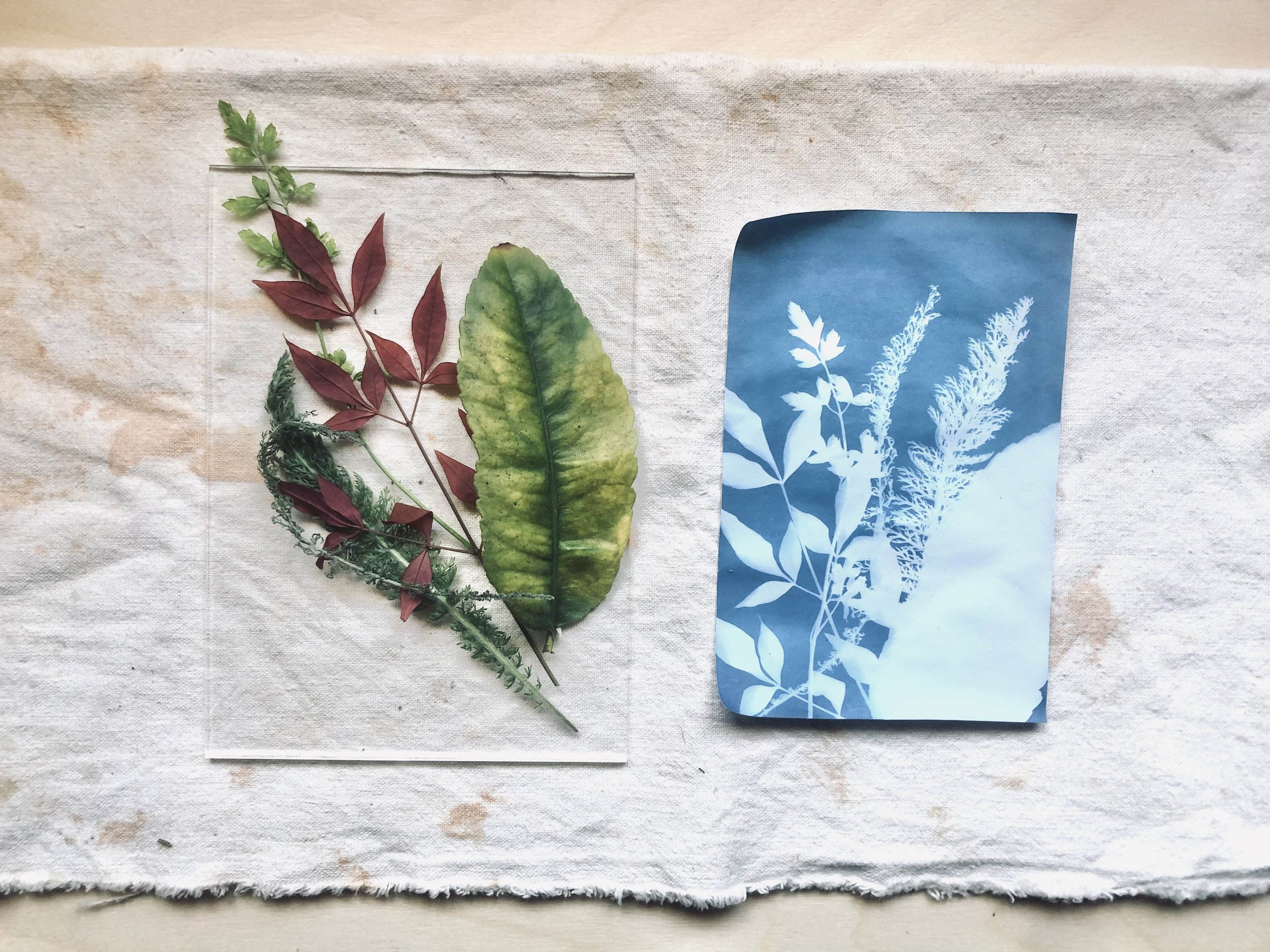Solar-Printed Garden Snapshots: How to Make a Cyanotype
This project is a lesson in botany, chemistry, orienteering, nature journaling and art.
Cyanotype printing is an early photographic method. It uses paper coated with iron salts that react with the sun to create a direct print of whatever objects are on top of the paper.
Aside from using those fun Sun Print kits as kids, our first exposure to cyanotype printing came some years ago from our friend Kameron at Creative Creatures Co. She taught us about English botanist Anna Atkins, who lived in the early 1800’s and created some of the earliest botanical photographs with her cyanotype prints of seaweed. Cyanotypes have also been an inexpensive way to reproduce architectural plans and are the origin of the term “blueprint.”
Today we’re using this original photographic technique as a method to explore and document a moment in time- or a “snapshot”- in our gardens. Here’s what you need, and what we did, so you can follow along at home.
Materials:
Sunprint paper
A piece of glass or clear acrylic plexiglass
A tray or piece of cardboard
A collection of flat objects, flowers, grasses, leaves, lace
A room where you can turn out the lights and close the curtains to dim the light
A bucket of cool water or a faucet
What We Did:
First, we harvested grasses, flowers, feathers, seeds and more from around our homes.
Next, we found a shady spot to lay out our piece of cyanotype paper. Only take one sheet out of the bag at a time and leave the bag closed to the rest of the paper stays in the dark.
We laid out our gathered plant materials and composed our designs on top of our cyanotype paper and covered it with a piece of clear plexiglass.
We waited for a couple of minutes - follow your paper package’s instructions - to let the sun do its printing magic.
Finally, we developed our prints by swishing them in a bucket of water.
Look how beautiful they came out!
After drying on a towel and flattening in a book, you can add these prints to pages in your nature journals, give them as gifts, and use them to study the patterns in plant life around your home.
We’re thinking of a next project that takes this a step further: making a “Sun Print- a -Day” journal that documents the life of our garden through cyanotype.







